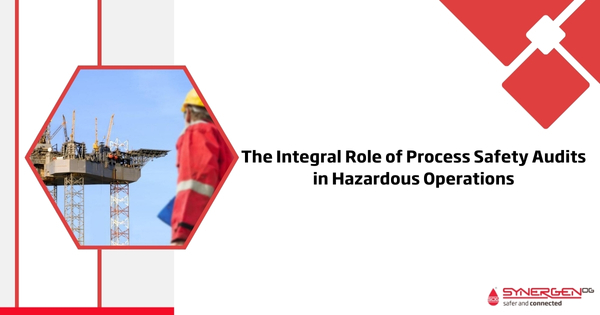
In hazardous operations, ensuring a secure and reliable environment is non-negotiable. This is where the role of a Process Safety Audit becomes not just beneficial but integral. These audits scrutinize the resilience of an organization’s safety management system, focusing on preventing catastrophic incidents that could harm personnel, the environment, and the facility itself.
The Essence of Process Safety Audits
A process safety audit is a meticulous examination, aimed at certifying an organization’s alignment with established safety standards and regulations. It serves as a cornerstone for enhancing operational safety, identifying risks, and devising strategies to mitigate potential hazards.
Why Are Process Safety Audits Crucial?
- Risk Identification: They help pinpoint potential hazards before they escalate.
- Gap Analysis: Audits showcase the chasm between current practices and industry standards.
- Continuous Improvement: They pave the way for evolving safety practices, aligning them closer to zero incidents.
- Compliance Assurance: Ensuring adherence to regulations avoids legal ramifications and promotes a culture of safety.
Conducting a Successful Audit: A Snapshot
- Preparing: Involves defining the audit’s scope, assembling a proficient team, and collating necessary documentation.
- Executing: The on-site audit phase, where data is collected, and the environment is assessed.
- Concluding: Final meetings, reporting, and laying out recommendations for improvement.
Keys to A Fruitful Process Safety Audit
- Comprehensive Planning: Identify what areas need scrutiny and why.
- Skilled Team: Assemble a group of experienced auditors knowledgeable in relevant standards and the organization’s processes.
- Effective Communication: Keep all stakeholders informed about audit purposes and expectations.
Data Collection & Analysis: The Backbone
Gathering accurate data is indispensable for evaluating the safety management system’s effectiveness. This involves documenting policies, interviewing personnel, and observing operations. The gathered data is later analyzed to flag potential risks and recommend actionable improvements.
Challenges and Resolutions
Conducting these audits isn’t without its hurdles; complexity, resource allocation, and maintaining objectivity can pose challenges. Addressing these through thorough planning, clear communication, and leveraging technology can sculpt a clear path to success.
The Role of Technology
Modern safety audit processes can be enhanced using technology—digital checklists, mobile data collection, and real-time monitoring systems, significantly streamline the audit process. Moreover, data analysis tools can unveil trends and patterns that might go unnoticed, leading to more informed decisions.
Success Stories: A Testament to Efficacy
- BP Texas City Refinery: Post-audit actions led to a monumental 92% reduction in safety incidents.
- Shell Deer Park Refinery: A dedicated safety culture program saw safety performance soar by 57%.
The Path to Continuous Improvement
Viewing audits as a mere compliance checklist would be underestimating their potential. They are stepping stones toward a culture of continuous improvement, where each audit lays the groundwork for safer, more compliant operations.
Conclusion
The realm of hazardous operations is fraught with potential dangers, making process safety audits an indispensable tool for organizations striving to maintain an impeccable safety record. These audits are not just about ticking boxes but are a commitment to operational integrity, regulatory compliance, and, most importantly, the well-being of personnel and the environment. Embracing the rigorous yet rewarding journey of continuous safety audits propels organizations toward excellence in safety management, setting new benchmarks and fostering a resilient safety culture.
Read more on Process Safety Audits – https://synergenog.com/process-safety-audit/
SynergenOG – Process Safety Consultant
Leave a comment